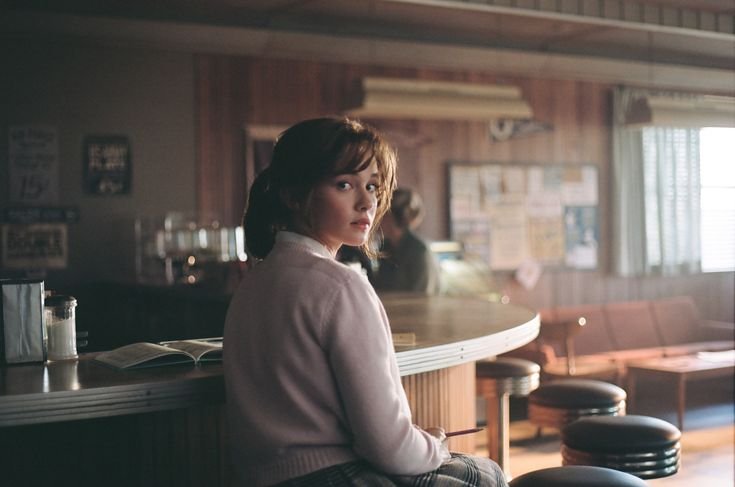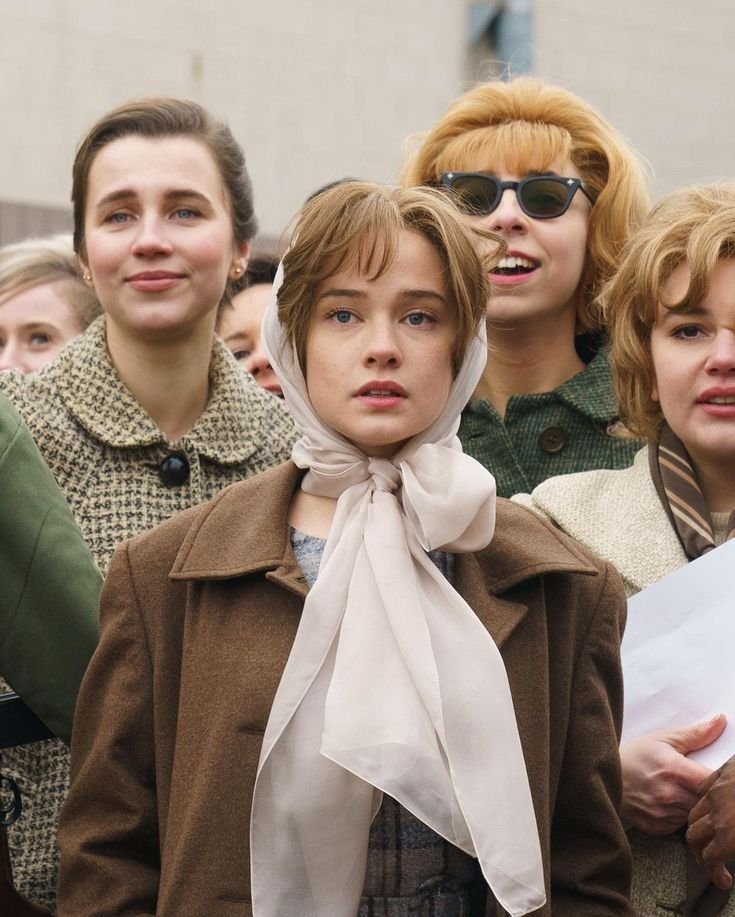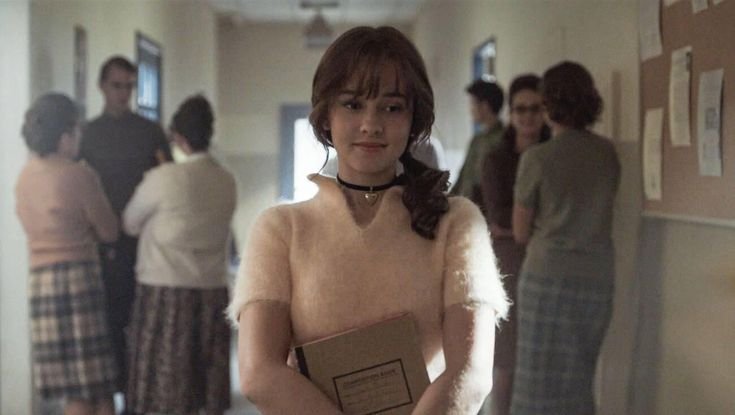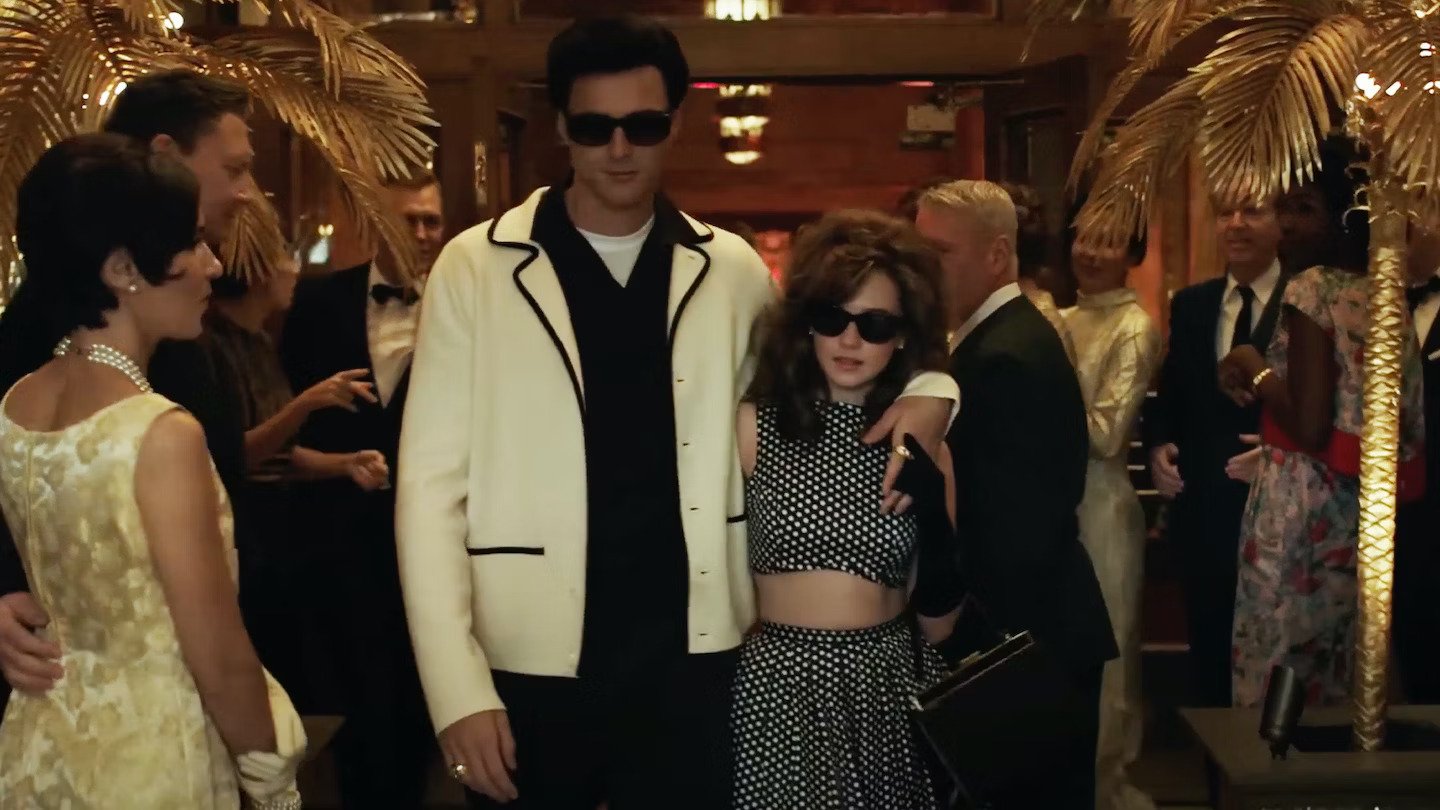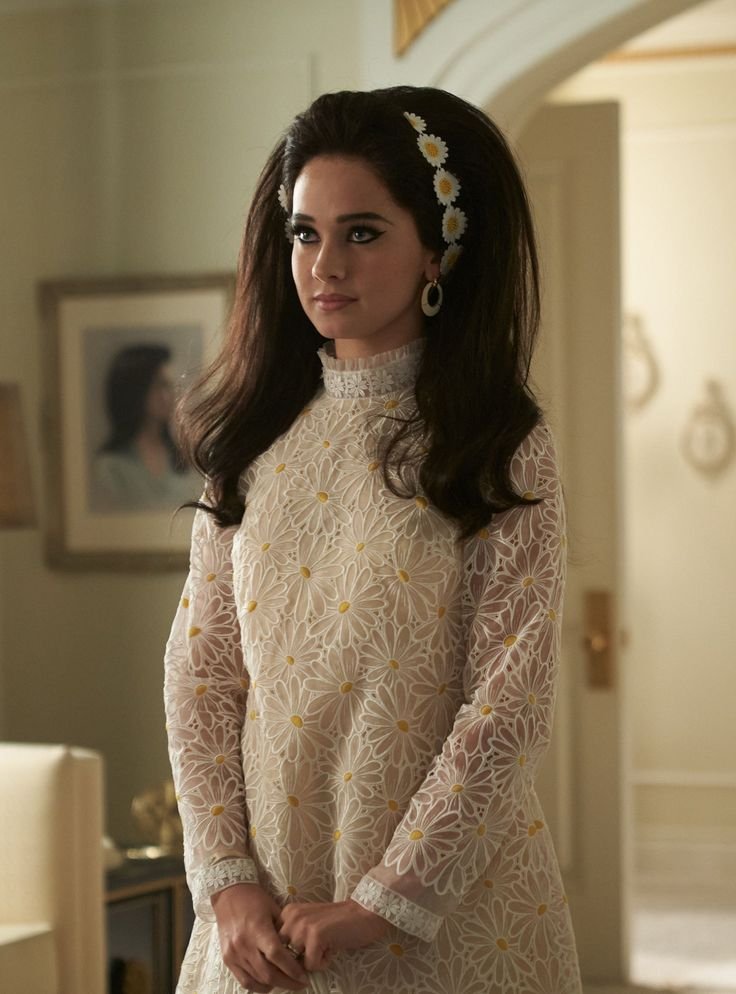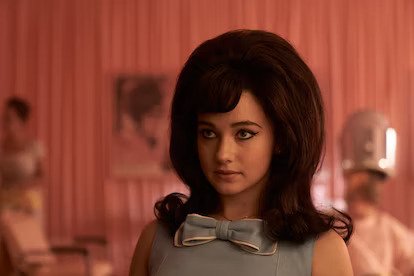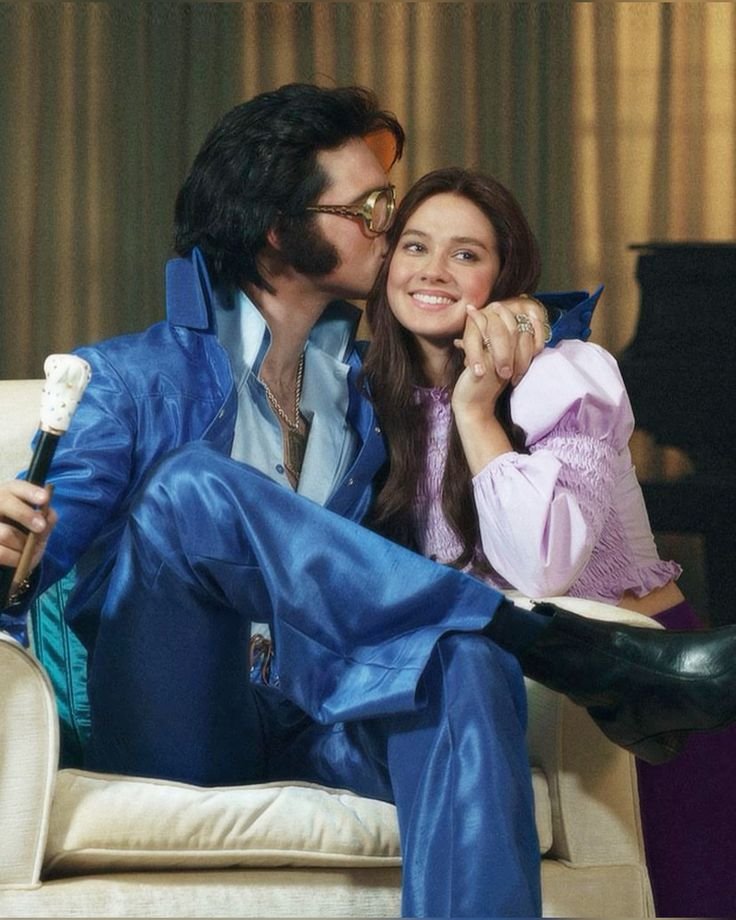The Unspoken Story in Sofia Coppola’s “Priscilla”
Written by Liz Garcia
Sofia Coppola’s “Priscilla” wastes no time introducing the famed Mrs. Presley. Her story begins as a wide-eyed girl, donning dreary browns and pastel pinks, who has already visited Elvis Presley’s Army home enough times to be daydreaming about him at school and even share a few kisses. A then fourteen-year-old stationed with her family in West Germany, Priscilla Beaulieu was oblivious to the changes a simple house visit to meet the King of Rock and Roll would make. Based on Priscilla Presley’s 1985 memoir, “Elvis and Me,” Coppola’s newest film starring Cailee Spaeny presents the inconspicuous Presley story, unveiling the allure and toxicity behind the great American couple. Chronicling the life of the forthright icon of winged liner and beehives, the intentional styling in “Priscilla” pushes the progression of the girl who fell in love with a man.
Jo-Ann MacNeil, makeup department head, Cliona Furey, hair department head, and Stacey Battat, head of the costume department, all worked in tandem to transform Spaeny into the 60s beauty legend. Together, the women meticulously planned looks according to the storyline and Coppola’s vision for the film.
During the early embers of her relationship with Elvis, a doting, baby-faced Priscilla wears a girlish ponytail, bouncy bangs, and plaid skirts—all appropriate for an innocent school girl. After frivolously trying on dresses in the mirror, as any girl does before an important outing, she finally arrives at Elvis' home for the first time in a dreamy, pastel blue dress decorated with a bow. Several encounters and dates later, the dreamy blues are swapped for mature browns, simple ponytails fall into romantic, side swept styles, and flushed cheeks are blushed by pigment instead of love. Graced by the presence of the Memphis-based singer, Priscilla’s once virginal appearance begins maturing at the sheer magnitude of his influence.
Elvis eventually returns to Memphis to pick up his acting career, leaving behind a yearning Priscilla. Awestruck, she quickly loses interest in her subdued life, falling asleep in class and ignoring her homework to write him letters instead. A calendar year passes and a surprise phone call from Elvis inviting her to Graceland saves her from utter boredom. A few days into her trip, he suggests a getaway to Las Vegas. Immediately, Priscilla’s brown hair gets bigger, the outfits grow more sophisticated, and a baby version of her soon-to-be signature cat eye is first introduced.
“That scene was kind of her introduction into the lifestyle of Elvis Presley. It was the rock ’n’ roll lifestyle. She was a simple girl with a simple style,” MacNeil says in an interview with Harper’s Bazaar. Partying in Sin City, Priscilla gets her first taste of Elvis’s opulent lifestyle—if she’s going to play a part, she needs to look it, too.
Solidifying their relationship, Priscilla moves to Mephis and into Graceland. She slowly assimilates to her new space, styling her hair in a classic beehive and emphasizing her winged liner—her look gradually grows bolder the more serious the relationship grows. Segueing into the classic makeover scene, Elvis takes her out shopping to match her new setting. As Priscilla tries on dresses, he strongly voices opinions on looks he disapproves of. He also comments on her makeup, or lack thereof, mentioning she should wear more eyeliner and dye her hair black, nearly mimicking his own appearance; she nods obediently. Then, the real transformation begins: curled brown hair turns into a jet black dome, a thick cat eye is accompanied by an all-around rim of black liner, and a major wardrobe upgrade with unembellished, sophisticated outfits build the quintessential 60s mod look present for the majority of the film.
In a way, controlling Priscilla’s look tethers her more closely to Elvis, an accessory to compliment the extravagant Presley empire. She often acts as a mirror for him, coordinating outfits to enhance his star presence. Now fully immersed in the grandeur, remnants of Priscilla’s youth have been erased. Throughout a long-distance relationship and cheating rumors with his co-stars, Elvis has relied on Priscilla to be the loyal woman waiting for him at home. Much of the film reveals a lonely Priscilla aimlessly wandering around Graceland like a ghost. She even begins to lose faith in Elvis’ love for her, noticing the imbalance in effort. This deglamorization of their relationship peels away to reveal a girl who just wants to be loved.
As Priscilla comes to this realization after her affection is constantly swatted away, she decides to spend her time with her daughter, Lisa Marie, in L.A. Basking in the California rays, her fair skin develops a sunkissed tan, her cheeks are beautifully blushed with a peachy wash of color, and her hair has returned to a natural shade of brown. Most noticeably, her signature heavy-winged liner disappears, signaling a return to her roots. When posing for the family portrait, Priscilla and Elvis no longer look like a coordinating couple, leaving behind the elements that “made” Priscilla a Presley. “You’re losing me to a life of my own,” she tells Elvis.
Coppola successfully uncovers lesser-known details of the deceivingly glamorous relationship; she beautifully depicts the isolation and turmoil within the romance that many women can relate to. MacNeil, Furey, and Battat support the film in its visual storytelling by combining hair, makeup, and wardrobe to amplify Priscilla’s life transitions throughout her famous relationship with the King from Memphis. As the film concludes, she drives away from Graceland for the last time as Dolly Parton’s “I Will Always Love You” plays in the background. Priscilla leaves behind the extravagant life of a Presley and slowly takes the road to reuniting with her fourteen-year-old self.

